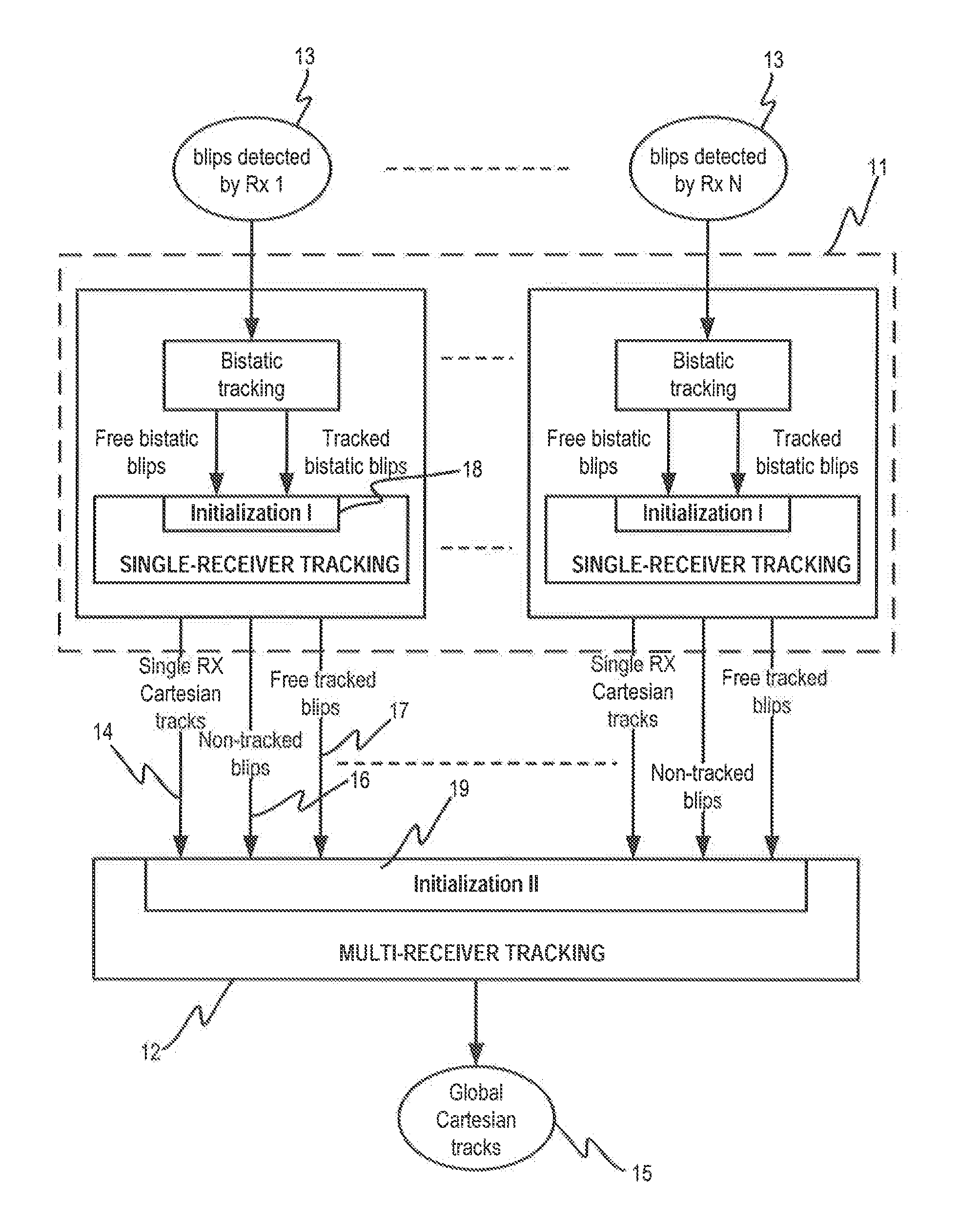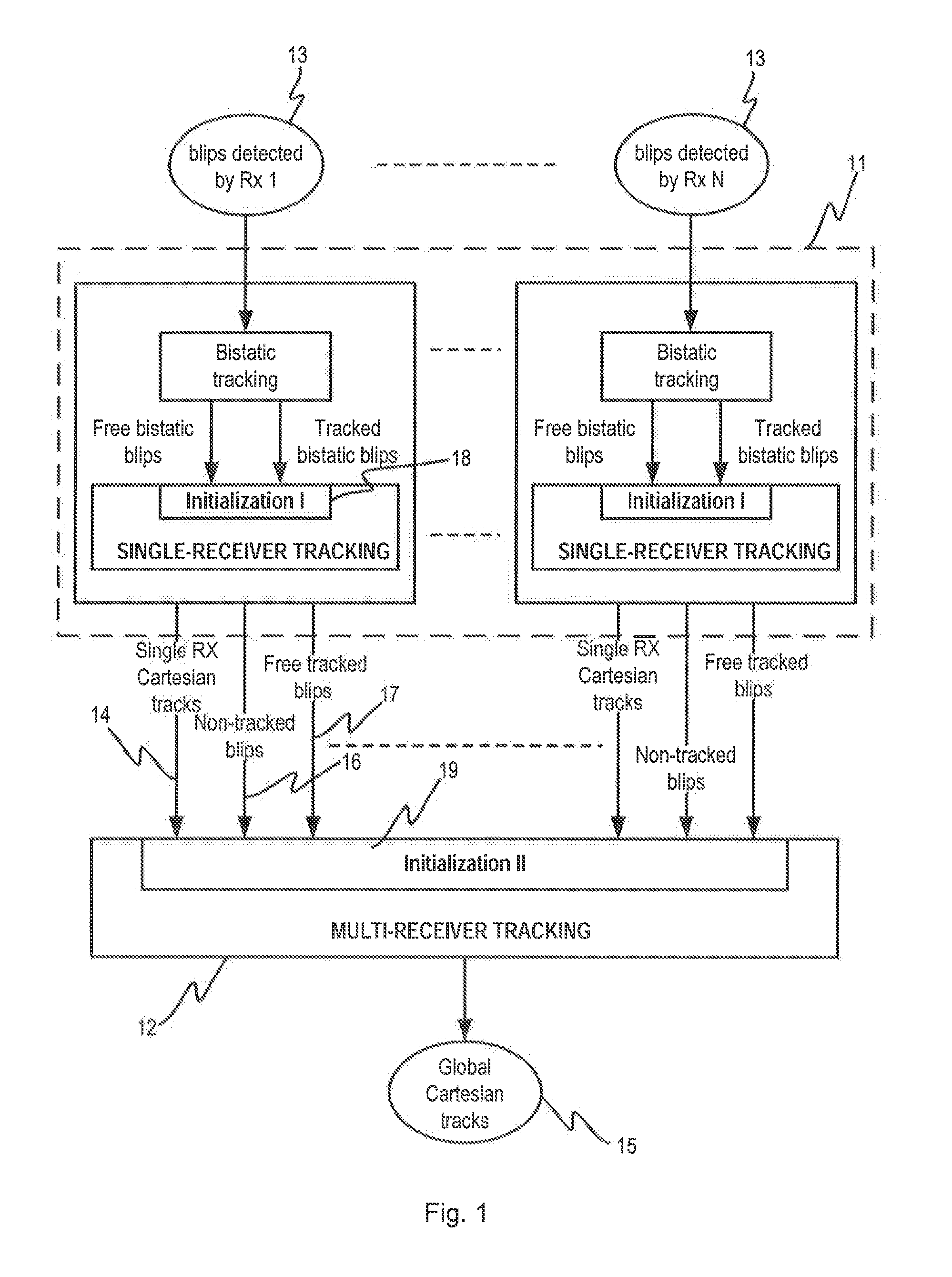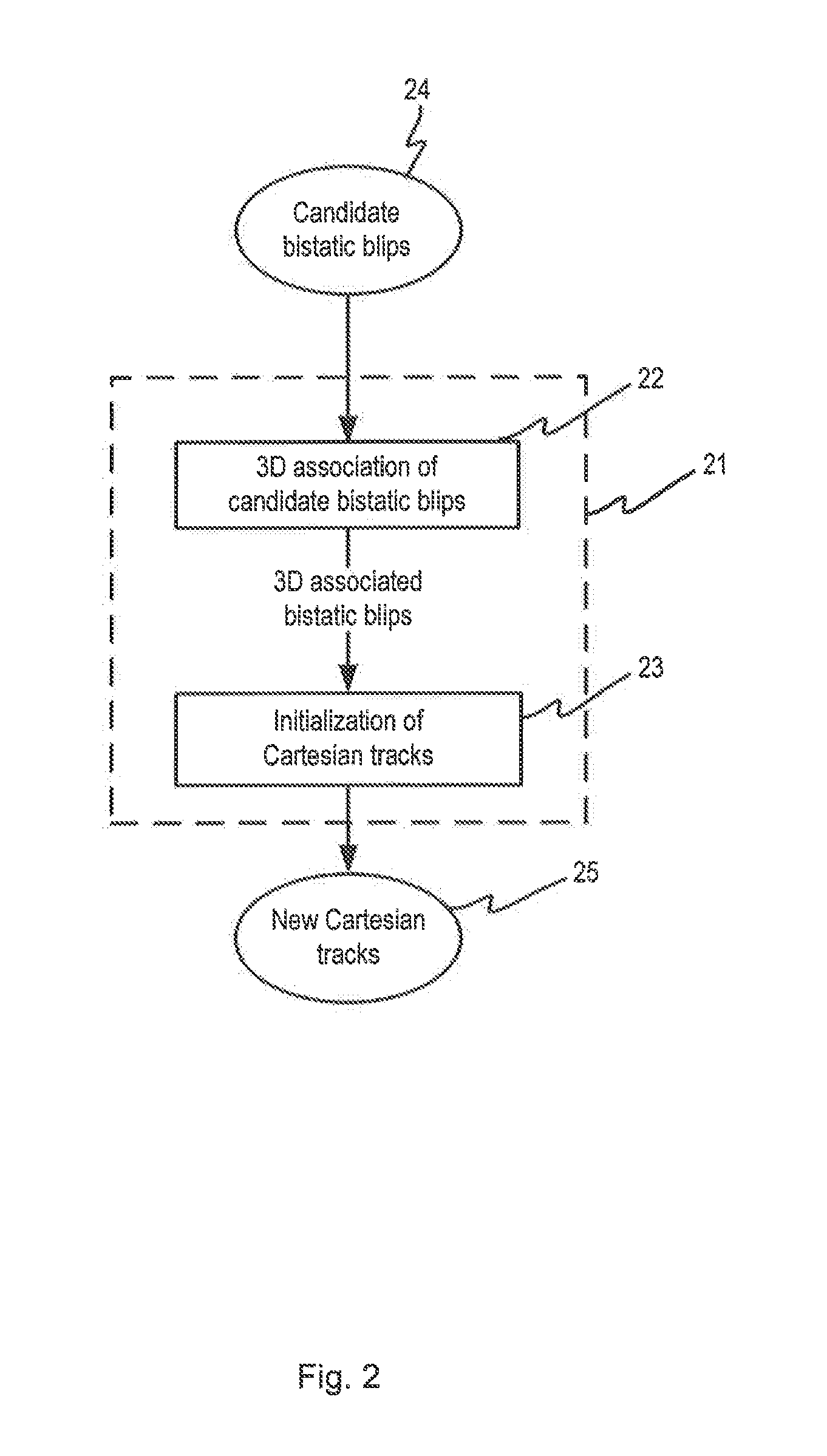Method for initializing cartesian tracks based on bistatic measurements performed by one or more receivers of a multistatic radar system
a multi-static radar and receiver technology, applied in the field of multi-static radars and multi-target tracking performed from passive multi-static systems, can solve the problems of difficulty in initializing cartesian tracks, difficulty in taking, and certain difficulties in operating a passive radar system comprising a plurality of transmitters and/or receivers
- Summary
- Abstract
- Description
- Claims
- Application Information
AI Technical Summary
Benefits of technology
Problems solved by technology
Method used
Image
Examples
Embodiment Construction
[0070]FIG. 1 presents the block diagram of an exemplary tracking method suited to a passive radar system comprising a number of receivers, each receiver forming, with the opportunity transmitters present in the monitored area, different bistatic bases. Such a method naturally comprises one or more initialization modules making it possible to form tracks from individual detections, that is to say, formed bistatic blips.
[0071]It will be recalled here that a bistatic blip corresponds to a radar observation that has given rise to the detection of a possible target. This observation is associated with specific measurements such as, notably, bistatic distance, bistatic speed and azimuth measurements.
[0072]As FIG. 1 illustrates, the bistatic tracking method taken as an example comprises two information merging levels resulting in the formation and maintenance of Cartesian tracks.
[0073]The function of the first level 11 is to perform a merging of the detection information, of the bistatic b...
PUM
 Login to View More
Login to View More Abstract
Description
Claims
Application Information
 Login to View More
Login to View More - R&D
- Intellectual Property
- Life Sciences
- Materials
- Tech Scout
- Unparalleled Data Quality
- Higher Quality Content
- 60% Fewer Hallucinations
Browse by: Latest US Patents, China's latest patents, Technical Efficacy Thesaurus, Application Domain, Technology Topic, Popular Technical Reports.
© 2025 PatSnap. All rights reserved.Legal|Privacy policy|Modern Slavery Act Transparency Statement|Sitemap|About US| Contact US: help@patsnap.com



